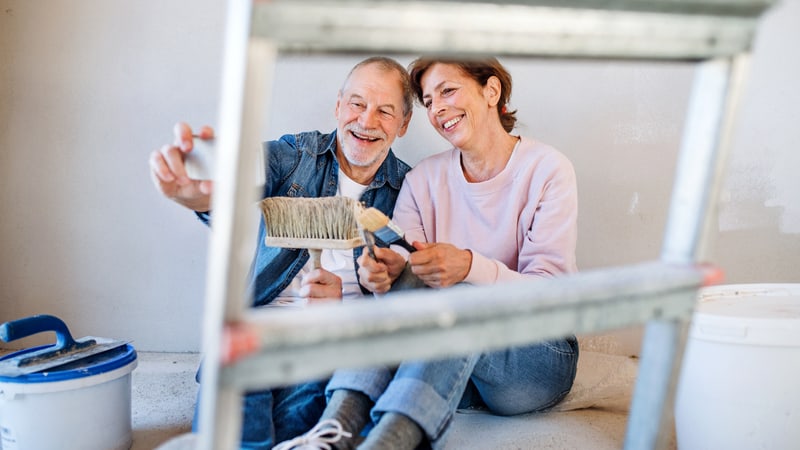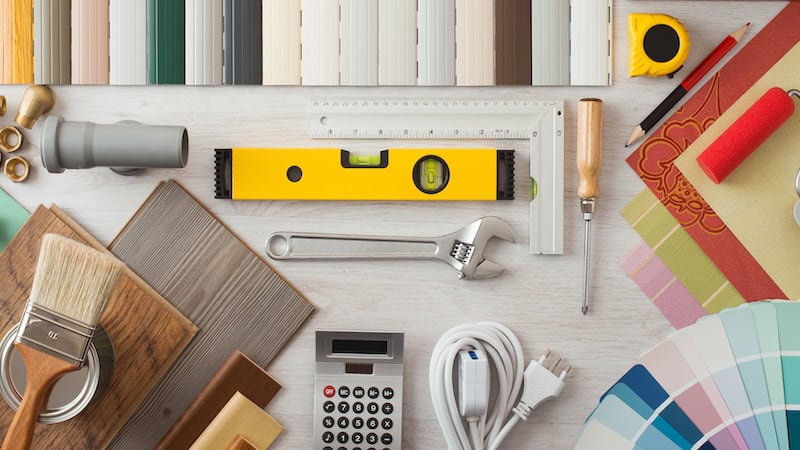Paint Your Home With Ease
Tips and Tricks for Effortless House Painting

Painting your home can be a daunting task, especially for those who have little to no experience in DIY home improvement. However, with the right tips and tricks, painting your home can be an effortless and even enjoyable experience. In this blog post, we’ll cover everything you need to know for easy house painting, from prepping your walls to choosing the right tools and paint. So read on to learn how to paint your home with ease!
Gather the Necessary Supplies and Tools
Before you start painting your home, it’s crucial to gather the necessary supplies and tools. This will not only save you time but also ensure a successful outcome. You will need paint brushes, paint rollers and refills, drop cloths, a ladder, painter’s tape, and a paint tray. It’s also essential to have a set of cleaning materials, including rags, a bucket, and a cleaning solution.
Before purchasing these items, determine how much paint is needed for your project by measuring the room’s dimensions. Additionally, consider investing in high-quality supplies and tools, as they can lead to a more efficient and effective painting experience. By having all the necessary items on hand at the outset, you can ensure a smooth and seamless painting process.
Prepare the Surfaces to Be Painted
The first thing to do is to clean the surfaces with a basic cleaning solution, such as soap and water. Next, repair any damage to the surface, such as filling cracks and holes with filler and smoothing them over with sandpaper. Sanding the surface is also important to ensure that the paint has a smooth surface to adhere to.
Afterward, use painter’s tape to mask off any areas that should not be painted, such as window frames and baseboards. Taking time to properly prepare the surfaces to be painted will save much time and frustration in the long run, and lead to a superior final result.
Choose the Appropriate Paint Type
Different types of paint are designed for different surfaces and uses, so it’s crucial to choose the right one to ensure a long-lasting and high-quality finish. Some common types of paint include latex, oil-based, and enamel paint.
Latex paint is a water-based paint that works well for walls and ceilings, while oil-based paint is an excellent option for high-traffic areas such as doors and trim. Enamel paint is perfect for painting cabinets and furniture. Before starting any painting project, it’s essential to do your research and choose the appropriate paint type for your specific needs and surfaces to ensure a smooth and successful painting experience.
Select the Right Brushes and Rollers
Selecting the right brushes and rollers is crucial for a smooth and even application of paint. For best results, choose high-quality brushes with synthetic or natural bristles, depending on the type of paint you are using. Synthetic brushes work well with latex paint, while natural bristles are ideal for oil-based paint.
Rollers come in different sizes and materials, so it’s important to consider the surface you’ll be painting. Use a shorter nap roller for smooth surfaces like walls and ceilings and a longer nap roller for textured surfaces like stucco or brick. Additionally, ensure that your brushes and rollers are clean and properly stored after use to prolong their lifespan and maintain their effectiveness.
Estimate the Amount of Paint Needed
Before you begin painting your home, it is essential to calculate the amount of paint needed for the project. This will help you avoid running out of paint mid-project or purchasing too much, wasting your money. The amount of paint needed depends on the surface area you are going to paint and the type of paint you choose.
To get an estimate, measure the height and width of each wall and multiply them to determine the square footage. You can then use the paint manufacturer’s recommended coverage per gallon to calculate the number of gallons of paint you will need. It is also suggested to add extra paint to your estimate to account for touch-ups and multiple coats. With an accurate estimate of the amount of paint required, you can purchase the necessary amount and avoid any interruptions during your painting project.
Utilize Drop Cloths and Painter’s Tape
Utilizing drop cloths and painter’s tape can help prevent unwanted drips, spills, and smudges on your floors, furniture, and trim. Drop cloths come in various materials, such as canvas, plastic, and paper, and are easy to lay down and secure in place. Painter’s tape is also a useful tool for creating clean, straight lines and preventing paint from bleeding onto adjacent surfaces. Take the time to properly prep your space using these essential materials, and you’ll save yourself the headache of trying to clean up a mess later.
Allow Adequate Drying Time Between Coats
Rushing through the painting process and applying the second coat before the first coat has fully dried can lead to unsightly smudging, streaking, and clumping. Ideally, you should wait at least 24 hours before applying a second coat, and even longer if the weather is humid or cool. Additionally, make sure that the first coat is completely dry to the touch before proceeding with the second coat. This will ensure that the two coats properly bond together, resulting in a smooth, even finish.
Conclusion
Painting your home is a great way to transform the look and feel of any room. But if you want to achieve flawless results, it’s important to do your research and be prepared with the right materials and tools. Following these tips will help ensure that your painting project is successful, so you can enjoy your freshly painted space for years to come.
Minimalism in Decorating: A Perfect Pairing with Decluttering


